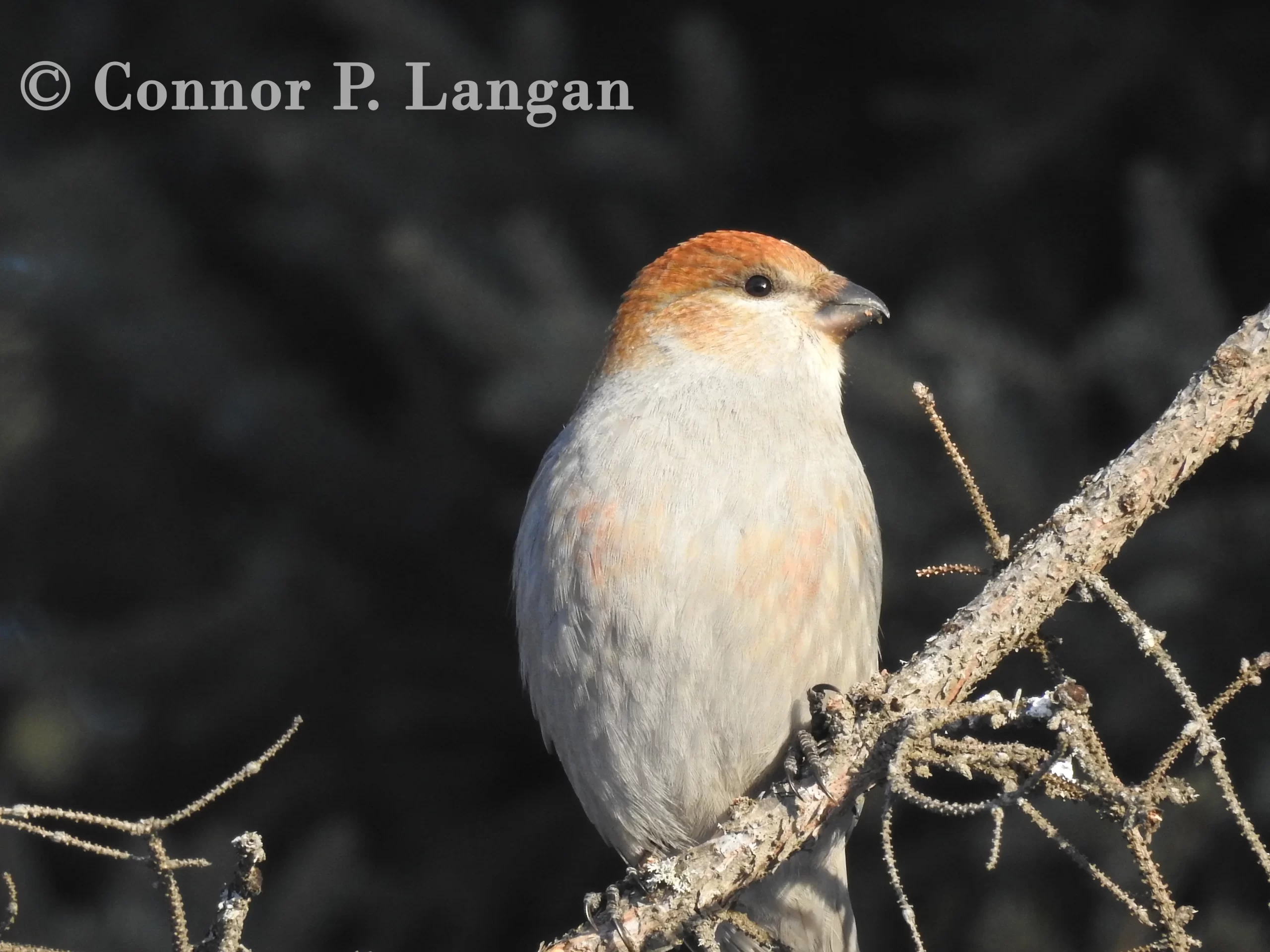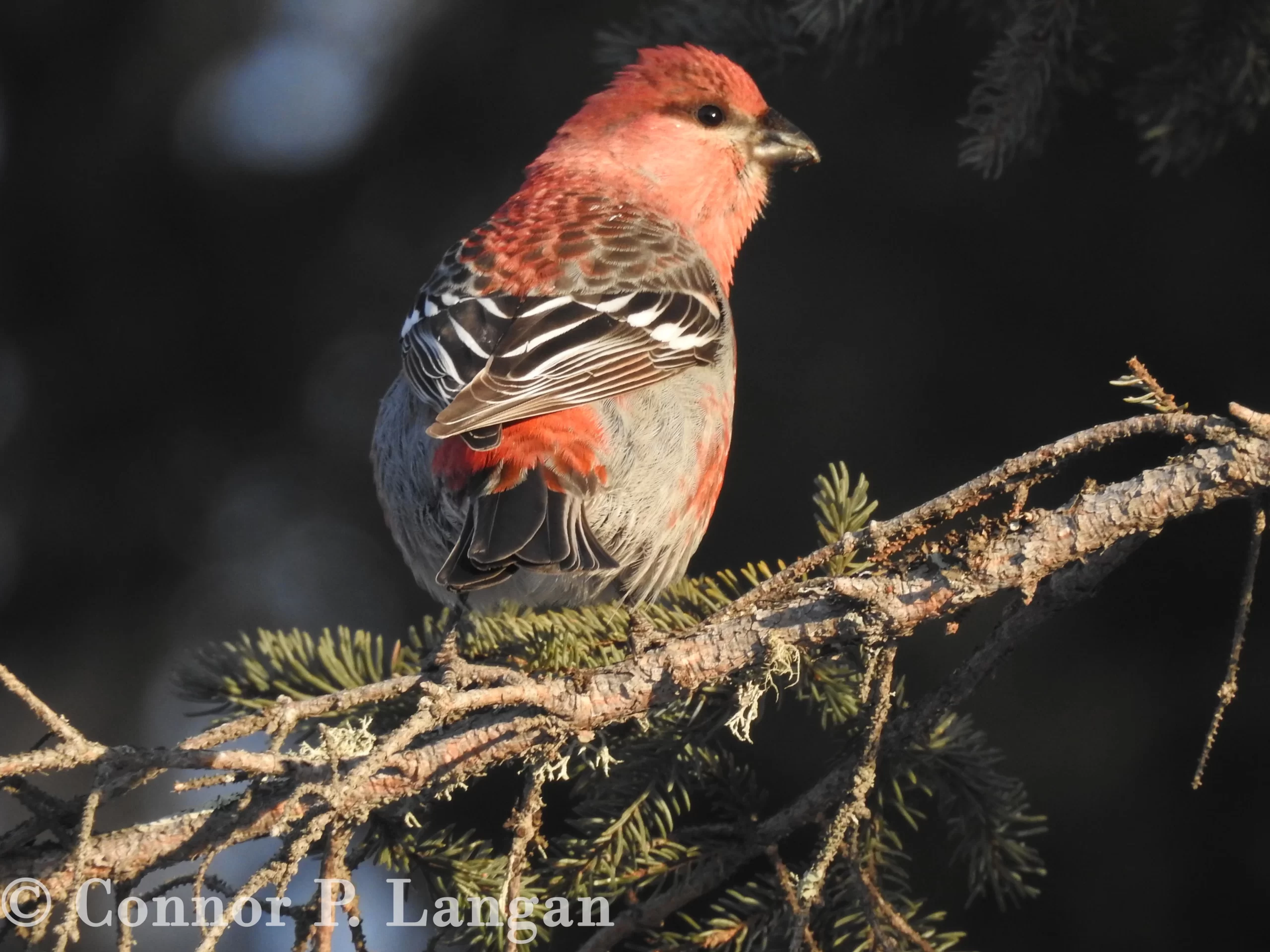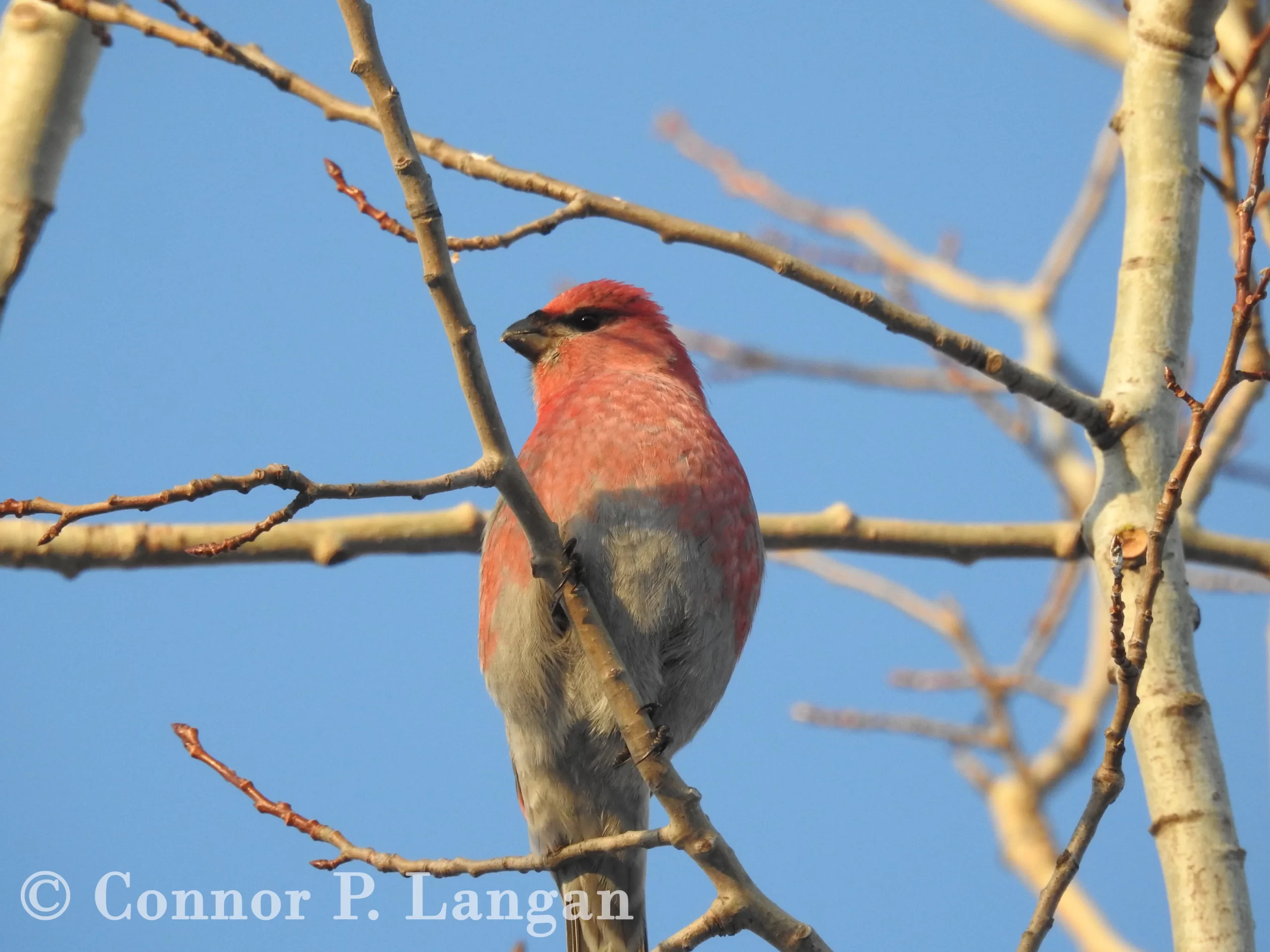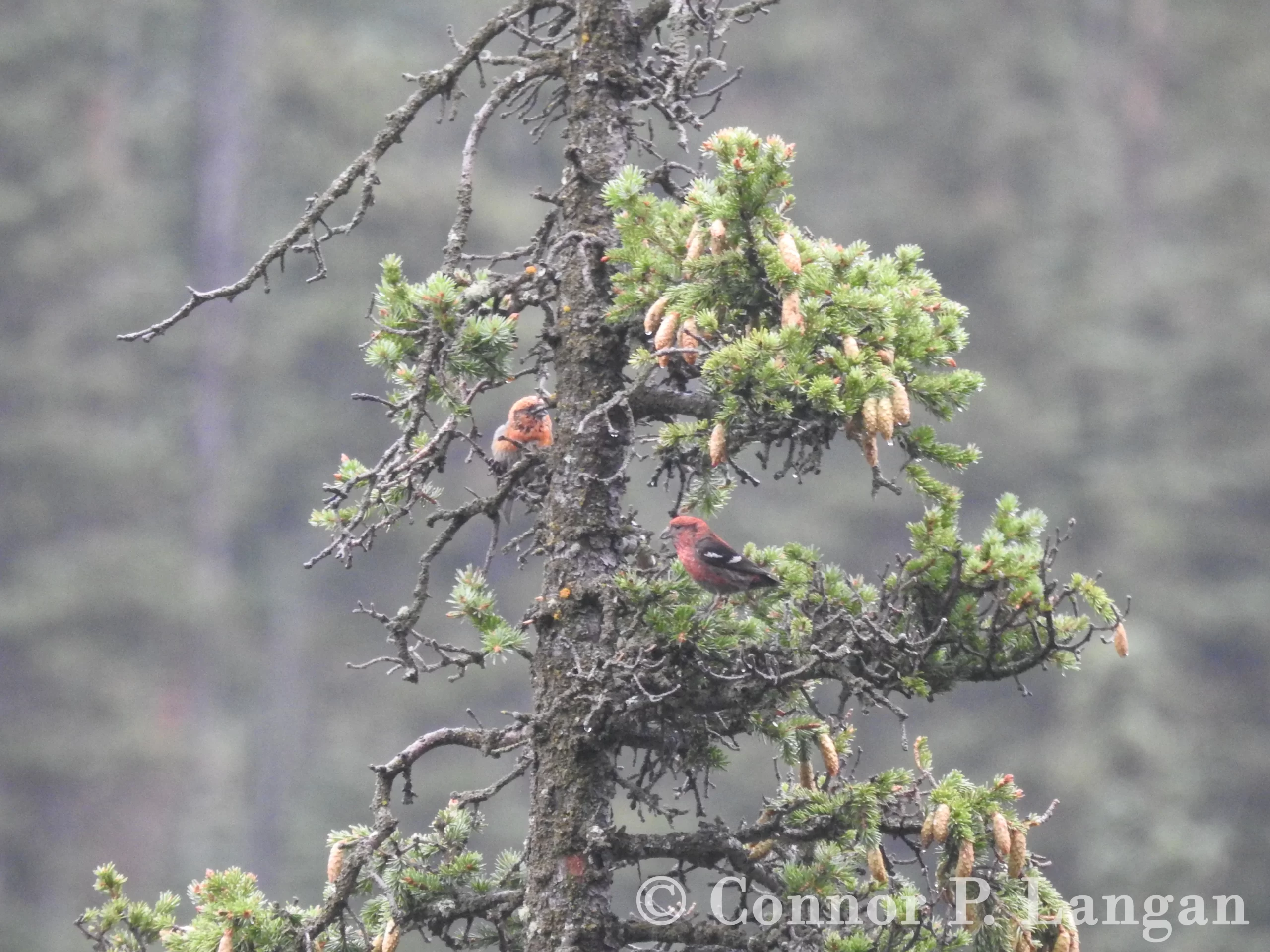Description
Pine Grosbeaks are large, round finches with thick, short beaks and long, moderately-forked tails. These birds are sexually dimorphic.
Pine Grosbeaks are sizable finches, measuring about 9 inches long on average and weighing about 2 ounces.
Male Pine Grosbeaks are a rosy red color overall. They have dark wings with 2 white wingbars.
Female Pine Grosbeaks are gray overall with yellow-orange heads and rumps. Like the males, they have dark wings with 2 white wingbars.
Immature birds tend to look like females.


Behavior
Pine Grosbeaks are social birds that can be observed foraging slowly and methodically in conifers. They form medium-sized groups of birds and frequently vocalize to communicate with other birds in their group.
Diet
These birds primarily consume plant materials like seeds, buds, and even pine needles. These birds consume insects intermittently during the summer, and adults feed their young far more insects than they consume themselves.
Pine Grosbeaks love eating black oil sunflower seeds from bird feeders.
Habitat
Pine Grosbeaks are denizens of coniferous forests, as these habitats provide them with everything they need to fulfill their needs.
When cone crops fail to produce enough food to meet this species’ needs, they wander south and frequent orchards, cemeteries, and parks.
Range
Pine Grosbeaks live in boreal forests in Canada and Alaska for the entirety of the year. They also survive year-round in the Rocky Mountains, and an isolated population exists in the Sierra Nevadas of California.
During the winter, Pine Grosbeaks travel to the upper United States. In years in which food is scarce, Pine Grosbeaks travel south and may show up in states where they’re typically not expected.
Pine Grosbeaks also occur throughout much of Eurasia.
Breeding
Pine Grosbeaks are socially monogamous, with males defending territories and females handling nesting responsibilities.
Female Pine Grosbeaks construct nests without help from their mate. Pine Grosbeaks nest in coniferous trees, with nests being placed near the tree’s trunk at a moderate height.
A cup-shaped nest is made of twigs and grasses. The interior of the nest is lined with hair, feathers, and soft grasses.
Females lay 1 to 2 broods of eggs each year, with each clutch containing 3 to 4 eggs. Eggs are incubated for about 2 weeks, and nestlings depart from the nest 13 to 20 days later.
Backyard Birding
Pine Grosbeaks will visit backyard bird feeders that offer treats like black oil sunflower seeds. These birds may feed on the ground or eat directly from bird feeders.
These finches will not build a nest in birdhouses, but they may nest on or near your property if you live within their range and have lots of conifers nearby.
Population Status
Pine Grosbeak numbers have seemingly been consistent for the past half-century. There are an estimated 11 million Pine Grosbeaks worldwide.
Birds in the fragmented Sierra Nevada population may be especially prone to climate change.


